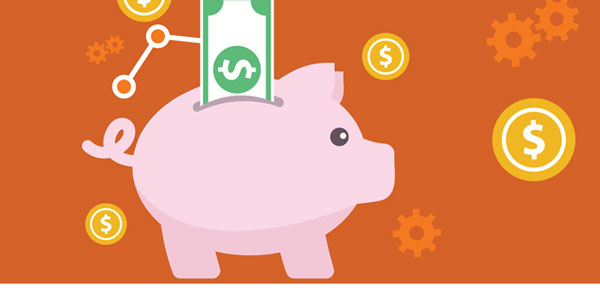Bankruptcy, a term that can send shivers down anyone's spine, often misconstrued as the end of financial stability, is in reality a legal tool designed to help individuals and businesses navigate through severe financial distress. It represents a second chance, an opportunity to wipe the slate clean and start afresh. This guide aims to demystify the complexities surrounding bankruptcy, providing you with solid understanding and knowledge to tackle financial challenges with confidence.
The Basics of Bankruptcy:
Bankruptcy is a legal process designed to provide individuals and businesses with financial relief when they are unable to meet their financial obligations. It is not a sign of failure but rather a strategic step to regain control over one's finances. This section will delve into the fundamental concepts of bankruptcy, shedding light on its purpose and the types commonly observed.
Types of Bankruptcy:
There are several types of bankruptcy, each designed to serve different financial situations. The most common types include Chapter 7, Chapter 11, and Chapter 13 for individuals and businesses in the United States.
- Chapter 11 bankruptcy, typically used by businesses that wish to continue operating while repaying their debts, allows for debt restructuring. This enables the debtor to propose a plan of reorganization to keep its business alive and pay creditors over time.
The Purpose of Bankruptcy:

The primary purpose of bankruptcy is to provide financial relief and a fresh start for individuals and businesses struggling with debt. It allows for the orderly distribution of assets, ensuring that all creditors are treated fairly. In addition to protecting the debtor from aggressive collection actions, bankruptcy also provides various benefits, such as:
Automatic stay:
By filing for bankruptcy, an automatic stay is issued, halting all collection efforts, such as foreclosure proceedings or wage garnishment.
Discharge of debts:
Upon successful completion of the bankruptcy process, certain types of debt can be discharged (erased), providing relief from overwhelming financial obligations.
Debt restructuring:
Bankruptcy also enables individuals and businesses to reorganize their debts and create a manageable repayment plan.
The Bankruptcy Process:
The process of filing for bankruptcy can seem daunting at first, but it is a well-structured and manageable process. This section will provide an overview of the steps involved in the bankruptcy process.
Preparation:
Before filing for bankruptcy, it is crucial to gather all financial documents, such as income statements, tax returns, and a list of assets and liabilities.
Credit Counseling:
Most bankruptcy laws require individuals to complete credit counseling before filing for bankruptcy. This is to ensure that alternative options are explored, and bankruptcy is the best course of action.
Filing:
Once all necessary documents have been gathered and credit counseling has been completed, the individual or business can file for bankruptcy
The Role of Creditors and Trustees:

In any bankruptcy case, the interests of creditors must be considered. This section will delve into the role of creditors, their rights, and how bankruptcy trustees act as impartial intermediaries overseeing the process. A clear understanding of these dynamics is crucial for both debtors and creditors to ensure a fair and equitable resolution.
Creditors:
Individuals or businesses to whom the debtor owes money are creditors. They have the right to receive payment for their debts, and bankruptcy proceedings aim to ensure that they are treated fairly.
Trustees:
Appointed by the court, trustees act as impartial intermediaries between debtors and creditors. Their primary role is to oversee the bankruptcy process, ensuring that all assets are accounted for and distributed fairly among creditors.
Alternatives to Bankruptcy:
While bankruptcy is a useful tool for handling financial challenges, it may not always be the best option. There are several alternatives to bankruptcy that individuals and businesses can explore before filing.
Negotiating with Creditors:
In some cases, negotiating with creditors may result in a manageable repayment plan or debt settlement.
Debt Consolidation:
This involves combining multiple debts into one loan with lower interest rates and monthly payments, making it more manageable to pay off.
Credit Counseling:
As mentioned earlier, credit counseling can help individuals explore alternative options and create a financial management plan.
Life After Bankruptcy - Rebuilding Financial Health
While bankruptcy offers a fresh start, it's essential to consider the implications for the future. This section will explore strategies for rebuilding credit, managing finances responsibly, and making informed financial decisions post-bankruptcy. By providing practical tips and insights, readers can approach life after bankruptcy with confidence and a solid financial plan.
Rebuilding Credit:
Bankruptcy can significantly impact an individual's credit score, but it is not permanent. By practicing responsible financial habits and making timely payments, credit scores can improve over time.
Budgeting and Financial Planning:
Creating a budget and sticking to it is vital for managing finances after bankruptcy. It helps individuals stay on top of their expenses and avoid falling into debt again.
Seeking Professional Advice:
Whether it's a financial advisor or an attorney, seeking professional advice can be beneficial when making significant financial decisions post-bankruptcy. They can provide guidance on rebuilding credit, managing finances, and avoiding future financial pitfalls.
Conclusion:
In conclusion, bankruptcy is a legal tool that, when understood and utilized correctly, can provide individuals and businesses with a pathway to financial recovery. By grasping the basics, exploring the types, understanding the process, recognizing the roles of creditors and trustees, and preparing for life after bankruptcy, individuals can navigate this challenging terrain with knowledge and resilience. It's not just about overcoming financial obstacles but about building a foundation for a more secure and stable financial future.











